Search Results
Back to JTS Torah Online's Main page
Leaving Egypt with Compassion and Justice
Apr 8, 2023 By Ben Levy | Commentary | Pesah
The Torah reading for Shabbat Hol Hamoed Pesah (Exodus 33:12–34:26) describes the aftermath of the Golden Calf. How do we make sense of this choice?
Read More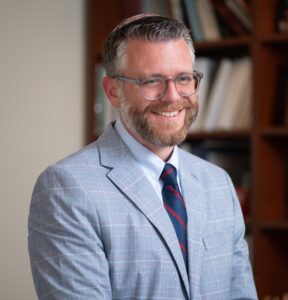
The Primacy of Questions
Mar 31, 2023 By Joel Seltzer | Commentary | Shabbat Hagadol | Tzav | Pesah
The truth is, of all the Jewish holidays of the year, Pesah, requires the most forethought, the most planning, the most cleaning, and yes, the most questions! The Jewish tradition understands deeply that ritual does not simply “occur,” instead it is the result of painstaking preparation and “beginning with the end in mind.”
Read More
Liberating our Planet: Climate Torah for the Passover Seder
Mar 31, 2023 By JTS Dayenu Circle | Commentary | Pesah
This year for Passover, JTS is proud to share Liberating our Planet: Climate Torah for the Passover Seder. Passover is an annual reminder that profound changes to our lived reality are possible, and now more than ever, we as a Jewish community need to pursue profound action to stop the climate crisis. This project is […]
Read More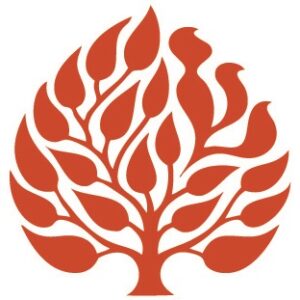
Between the Lines: The Kabbalistic Tree
Mar 29, 2023 By Library of the Jewish Theological Seminary | Public Event video
The Kabbalistic Tree, by J.H. Chajes, is the first book to explore the esoteric artifacts at the heart of Jewish mystical practice for the past 700 years: ilanot (trees). Melding maps, mandalas, and mnemonic memory palaces, ilanot provided kabbalists with diagrammatic representation of their structured image of the Divine. Scrolling an ilan parchment in contemplative study, the kabbalist participated mimetically in tikkun, the […]
Read More
Gender Identity in Rabbinic Literature
Mar 27, 2023 By Marcus Mordecai Schwartz | Public Event video | Video Lecture
Great fans of ambiguity, the sages of the Mishnah and the Talmud loved to problematize what people of their day considered the most deeply ingrained of binaries, including gender and sex identity. For them, human understandings were imperfect, and every perspective was up for debate. Torah was Divine and perfect, but its interpreters were not. Long ago, our sages debated questions of sex difference and the extent of our capacity to know what we are. We explore some of these debates and ask if they still hold relevance for us.
Read More
What Does It Mean to Be Called?
Mar 24, 2023 By Burton L. Visotzky | Commentary | Vayikra
This week we begin reading the middle book of the Five Books of Moses, Leviticus. Its position in the Torah scroll is not just coincidental; the laws of Leviticus are central to the earliest rabbis’ understanding of Judaism. The rules in the book are indicated by its name in English (Latin, actually): Leviticus. These are the detailed regulations for the tribe of Levi, particularly that branch of the clan known as the kohanim, the priesthood.
Read More
Between Words and Pictures: Medieval Illuminated Haggadot from the JTS Library
Mar 23, 2023 By Marcus Mordecai Schwartz | Public Event video | Pesah
This session explored some of the priceless treasures in JTS’s collection of Haggadah manuscripts. We consider how the text of the Haggadah and the accompanying hand-drawn illustrations are—or are not—in conversation with each other and make some other unexpected discoveries between the covers of these rare medieval manuscripts.
Read More
On the Margins: Conversos and the Question of Jewish Belonging Throughout History
Mar 20, 2023 By Jonathan Ray | Public Event video | Video Lecture
Jewish law provides relatively clear standards for who is, and who is not, a member of Jewish society. But popular Jewish acceptance – or rejection – of certain people as “Jews” has often run counter to these legal definitions. From medieval Spain to the Ottoman Empire to modern day America and the State of Israel, conversion out of, or into, the Jewish community has raised tensions over who is (and isn’t) considered Jewish. We discuss the question of Jewish belonging throughout history by looking at groups of converts and the liminal space they inhabited on the margins of the Jewish world.
Read More
Making Space for God’s Presence
Mar 17, 2023 By Kara Tav | Commentary | Pekudei | Shabbat Hahodesh | Vayak-hel
Our rededication of the hospital’s ICU echoed for me the original Jewish sacred space described in the Book of Exodus. The double Torah reading for Vayak-hel and Pekudei provides God’s blueprint for a traveling sacred space that the Israelites would build during their journey through the wilderness. As they travelled, they would carry a place for the presence of God and for revelatory encounters between God and the high priests on behalf of the people. It would be a space for doing sacred work and for being with God.
Read More
Between the Lines: Shanda: A Memoir of Shame and Secrecy
Mar 14, 2023 By Library of the Jewish Theological Seminary | Public Event video
SHANDA: A MEMOIR OF SHAME AND SECRECY Part of Between the Lines: Author Conversations from The Library of JTS The word “shanda” is defined as shame or disgrace in Yiddish. This book, Shanda, tells the story of three generations of complicated, intense 20th-century Jews for whom the desire to fit in and the fear of public […]
Read More
Jewish-American, American-Jew: The Complexities and Joys of Living a Hyphenated Identity
Mar 13, 2023 By Arnold M. Eisen | Public Event video | Video Lecture
The Pew Reports and many scholars use the first description of who we are; JTS (and I myself) prefer the second. It matters a great deal to a person’s identity whether “Jew” and “American” are adjective or noun; it matters still more how Jews and non-Jews understand the hyphen that links the two parts of these (and other religious and ethnic identities) one to another. We explore that “liminal space” of the self through analysis of a wide range of books, essays, films and literary characters.
Read More
When Is Humility Not a Virtue?
Mar 10, 2023 By Walter Herzberg | Commentary | Ki Tissa | Shabbat Parah
Moses’s actions are puzzling and confront us with two related questions: On the one hand, why did Moses need to place the veil on his face? And on the other, why did Moses remove the veil when going before God and when relaying God’s words to the people—only to replace it as described above? Biblical commentators offer some fascinating insights.
Read More
Between the Lines: Sephardic Food and Culture
Mar 8, 2023 By Library of the Jewish Theological Seminary | Public Event video
Dr. Hélène Jawhara Piñer and Dr. Benjamin Gampel discuss how the mass conversion of Iberian Jews in the late 14th and 15th centuries, initially triggered by the anti-Jewish riots that swept Castile and Aragon in 1391, led to distinctive and identifiable food and eating practices among those Jews who were compelled to embrace the Christian faith.
Read More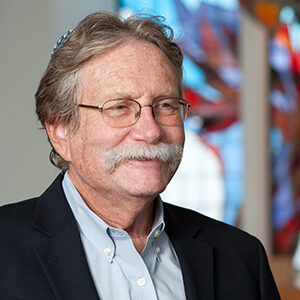
Between Obligation and Free Choice
Mar 6, 2023 By Gordon Tucker | Public Event video | Video Lecture
Jewish tradition prizes hiyyuv, the obligation to follow Jewish law, whereas modern culture places a great emphasis on making autonomous choices, and commitments that are voluntarily chosen. How do we find a comfortable space in between?
Read More
The Meaning of Aaron’s Holy Garments
Mar 3, 2023 By Robert Harris | Shabbat Zakhor | Tetzavveh
In this commentary, I would like to focus on some of the vestments of Aaron that he wore in his capacity as kohen gadol (High Priest). At the beginning of Exodus 28, the Torah commands that the Israelites who are skilled artisans should prepare a specific list of items for Aaron and the priests to wear. These include the breastpiece, ephod, robe, fringed tunic, headdress, and sash.
Read More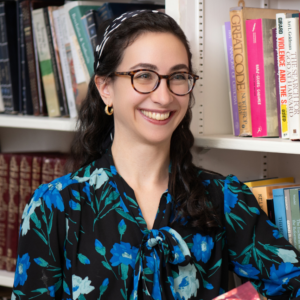
Between Law and Narrative in the Talmud
Feb 27, 2023 By Sarah Wolf | Public Event video | Video Lecture
This session presents the history of the law vs. narrative distinction in reference to the Talmud, and will show how this categorization became central to how Jews think about Jewish texts and Jewish learning more generally. We consider the limits of this binary by looking at some texts from the Talmud that seem to defy categorization, raising the question of what possibilities open up when we read Jewish legal texts as literature.
Read More
Gold and Incense: For Better and for Worse
Feb 24, 2023 By Stephen A. Geller | Commentary | Terumah
Parashat Terumah begins the long section of the Book of Exodus that deals with the Tabernacle, its furniture and vessels, and the garments of the high priest. The only interruption in this mass of cultic detail is the narrative of the sin of worshipping the Golden Calf and its aftermath in Exodus 32–34. The ritual details continue into Vayikra with the list of sacrifices in the cult.
Read More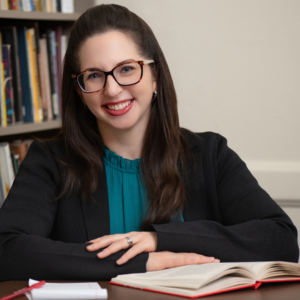
Why Does the Torah Care About Returning Lost Property?
Feb 17, 2023 By Yael Landman | Commentary | Mishpatim | Shabbat Shekalim
There is no obligation in the common law to retrieve someone’s lost property and return it. So why does the Torah make a point of establishing such a requirement? Why does the Torah specify that the owner of the lost animal is the finder’s enemy, and what is the scope of the finder’s responsibilities?
Read More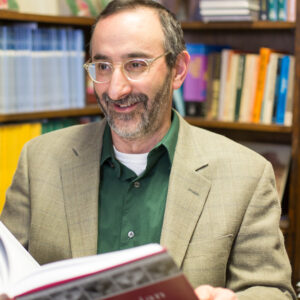
The Tent of Meeting: Central or Marginal?
Feb 13, 2023 By Benjamin D. Sommer | Public Event video | Video Lecture
The Tent of Meeting is described at great length in the Torah as the elaborate sacred tent located in the center of the Israelite encampment that travelled through the wilderness for forty years. But several passages in the Torah describe the Tent of Meeting differently, as a tiny structure located outside the Israelite camp. Why does the Torah include both historical memories of this structure? How does each structure reflect a particular religious worldview, and what does the presence of both in the Torah tell us about Judaism?
Read More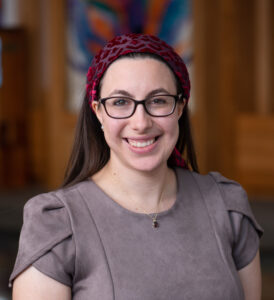
How Do We Meet At Sinai?
Feb 10, 2023 By Amelia Wolf | Commentary | Yitro
At the moment God initiates a new covenant with the People of Israel, they must learn to demarcate the spaces of their new relationship. Some of these boundaries are lines drawn by God. Others are fences maintained by human beings. How can humanity and the Divine exist in the same space and time? And what can we learn about how humans can exist in relationship with each other from that encounter?
Read MoreSUBSCRIBE TO TORAH FROM JTS
Our regular commentaries and videos are a great way to stay intellectually and spiritually engaged with Jewish thought and wisdom.




